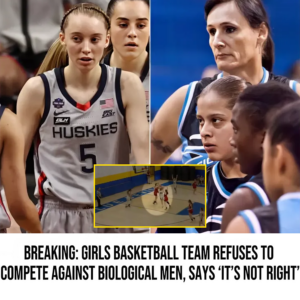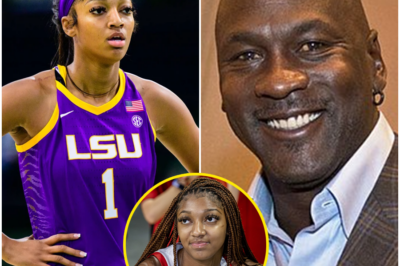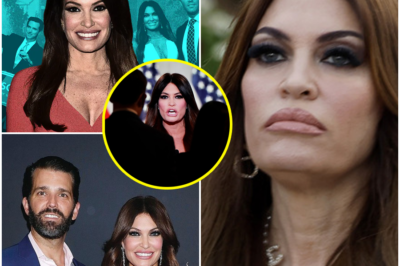“Breaking: Girls’ Basketball Team Refuses to Play Against Biological Males – Bold Move Sparks Nationwide Debate About Fairness, Identity, and the Future of Women’s Sports in America”

In a powerful and controversial stand, a high school girls’ basketball team has made national headlines by refusing to compete against a team that included biological male athletes. Their reasoning was clear and firm: “It’s not right.” That one statement has reignited a nationwide conversation about fairness, gender identity, and the evolving landscape of competitive sports.
At the center of this decision is the ongoing debate over the inclusion of transgender athletes in sports—an issue that has sparked passionate opinions on both sides. Advocates for transgender rights argue that all athletes should have the opportunity to compete according to their gender identity, citing inclusion and equality as fundamental values. On the other hand, critics point to concerns about competitive fairness, especially when biological differences may give transgender women—who transitioned after male puberty—an edge in strength, speed, and endurance.
This team’s decision not to play reflects a growing unease felt by many young athletes and their families. They argue that biological males, despite hormone treatments, may retain physical advantages that can undermine the spirit of fair play in women’s sports. Their refusal to participate wasn’t about exclusion, they insisted—it was about fairness, safety, and protecting hard-earned opportunities for girls in competitive athletics.
The team’s bold action has stirred intense debate across social media, television, and sports circles. Some have praised the girls for their courage in standing up for what they believe is right, while others have criticized the move as discriminatory. The reality is that the team’s decision represents more than just a single game—it’s a flashpoint in a broader cultural and legal conflict that has no easy answers.
Title IX, the landmark federal law enacted in 1972, guarantees equal opportunities for men and women in educational programs and sports. But what that law means in the era of gender identity remains an evolving legal question. How do we balance the rights of transgender athletes with the rights of biological female athletes to compete on a level playing field?
International sports bodies like the IOC have issued guidelines, such as hormone level requirements, to try to bridge that gap—but even those rules remain contentious. Critics say they don’t go far enough to protect fairness in women’s sports. Supporters argue they’re a step toward inclusion without erasing anyone’s identity.
Regardless of where people stand, the girls’ basketball team’s choice has added fuel to a national debate that isn’t going away. Their action challenges us to think more deeply about what fairness really means—and whose voices are being heard in shaping the future of sports.
News
BREAKING: Basketball Legend Michael Jordan Criticizes Angel Reese, Claiming She Lacks Real Skills and Focuses on Flaunting Sexy Photos Online Instead of Improving Her Game! Fans Are Stunned by Jordan’s Public Remarks—What Sparked This Controversial Critique, and How Is Angel Reese Responding? Get the Full Scoop on the Shocking Statement from the Basketball Icon and What This Means for Angel Reese’s Career Moving Forward!
BREAKING: Basketball Legend Michael Jordan Criticizes Angel Reese, Claiming She Lacks Real Skills and Focuses on Flaunting Sexy Photos…
SHOCKING: Jon Stewart Mocked Karoline Leavitt but Immediately Faced Her Ruthless Comeback—A Statement That Exploded All Over American Social Media! What Sparked This Fiery Exchange Between the Two? Fans Are Left Stunned by Leavitt’s Powerful Response to Stewart’s Criticism. Get the Full Scoop on the Explosive Moment That Has Everyone Talking About Karoline Leavitt’s Bold and Unapologetic Reaction!
SHOCKING: Jon Stewart Mocked Karoline Leavitt but Immediately Faced Her Ruthless Comeback—A Statement That Exploded All Over American Social…
CBS Unleashes a $700 Million Bombshell—Megyn Kelly and Candace Owens Set to Rival The View with Explosive New Morning Show! Sources Claim It’s the Boldest Daytime TV Move Yet, Already Stirring Wild Reactions from Liberals. What’s Really Behind This Jaw-Dropping $700 Million Deal, and How Will It Change the Landscape of Morning Television? Get the Full Scoop on CBS’ Game-Changing Move!
CBS Unleashes a $700 Million Bombshell—Megyn Kelly and Candace Owens Set to Rival The View with Explosive New Morning…
People Suddenly Understand the Real Reason Kimberly Guilfoyle’s Fiancé Dumped Her After Unfiltered Photo Exposes Shocking Details! Fans Are Stunned by the Unseen Side of Guilfoyle’s Relationship. What Was Revealed in the Photo, and Why Did It Lead to the Breakup? Get the Full Story Behind the Unfiltered Image That Changed Everything About Kimberly Guilfoyle’s Personal Life and Her Relationship with Her Fiancé.
People Suddenly Understand the Real Reason Kimberly Guilfoyle’s Fiancé Dumped Her After Unfiltered Photo Exposes Shocking Details! Fans Are…
Elon Musk Announces DOGE Will Save the U.S. Government Over $150 Billion by Cutting Waste and Fraud in Fiscal 2026! Fans Are Stunned by His Bold Prediction. How Will DOGE Achieve This? Get the Full Inside Scoop on Musk’s Plan!
Elon Musk Announces DOGE Will Save the U.S. Government Over $150 Billion by Cutting Waste and Fraud in Fiscal…
BREAKING: GMA3 Faces Major Shakeup—ABC Boss Plans to Ax DeMarco Morgan and Eva Pilgrim by Summer! What’s Behind the Shocking Rumors, and Why Are the Popular Hosts Being Let Go? Fans Are Left Stunned by the Potential Changes to Good Morning America’s Lineup. Get the Full Story on What’s Behind the Shakeup, What This Means for GMA, and Who Might Be Replacing Them!
BREAKING: GMA3 Faces Major Shakeup—ABC Boss Plans to Ax DeMarco Morgan and Eva Pilgrim by Summer! What’s Behind the…
End of content
No more pages to load












